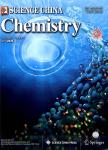Two-dimensional material-based virus detection
Two-dimensional material-based virus detection作者机构:Department of Materials Science and EngineeringCity University of Hong KongHong KongChina Department of ChemistryCity University of Hong KongHong KongChina Department of ChemistryThe Chinese University of Hong KongShatinHong KongChina Hong Kong Branch of National Precious Metals Material Engineering Research Center(NPMM)City University of Hong KongHong KongChina Shenzhen Research InstituteCity University of Hong KongShenzhen 518057China
出 版 物:《Science China Chemistry》 (中国科学(化学英文版))
年 卷 期:2022年第65卷第3期
页 面:497-513页
核心收录:
学科分类:08[工学] 080501[工学-材料物理与化学] 0805[工学-材料科学与工程(可授工学、理学学位)] 0703[理学-化学]
基 金:support from ITC via the Hong Kong Branch of National Precious Metals Material Engineering Research Center (NPMM) the Research Grants Council of Hong Kong (AoE/P-701/ 20) the Start-Up Grant (9380100) the grants from the City University of Hong Kong (9610478, 9680314, 7020013, 1886921) the Science Technology and Innovation Committee of Shenzhen Municipality (JCYJ20200109143412311, SGDX2020110309300301, “Preparation of single atoms on transition metal chalcogenides for electrolytic hydrogen evolution”, City U) funding support from the StartUp Grant (7200656, 9610482) Grant from the City University of Hong Kong (7020013)
主 题:two-dimensional materials virus detection field-effect transistor biosensor COVID-19
摘 要:Cost-effective, rapid, and accurate virus detection technologies play key roles in reducing viral transmission. Prompt and accurate virus detection enables timely treatment and effective quarantine of virus carrier, and therefore effectively reduces the possibility of large-scale spread. However, conventional virus detection techniques often suffer from slow response, high cost or sophisticated procedures. Recently, two-dimensional(2D) materials have been used as promising sensing platforms for the highperformance detection of a variety of chemical and biological substances. The unique properties of 2D materials, such as large specific area, active surface interaction with biomolecules and facile surface functionalization, provide advantages in developing novel virus detection technologies with fast response and high sensitivity. Furthermore, 2D materials possess versatile and tunable electronic, electrochemical and optical properties, making them ideal platforms to demonstrate conceptual sensing techniques and explore complex sensing mechanisms in next-generation biosensors. In this review, we first briefly summarize the virus detection techniques with an emphasis on the current efforts in fighting again COVID-19. Then, we introduce the preparation methods and properties of 2D materials utilized in biosensors, including graphene, transition metal dichalcogenides(TMDs) and other 2D materials. Furthermore, we discuss the working principles of various virus detection technologies based on emerging 2D materials, such as field-effect transistor-based virus detection, electrochemical virus detection, optical virus detection and other virus detection techniques. Then, we elaborate on the essential works in 2D material-based high-performance virus detection. Finally, our perspective on the challenges and future research direction in this field is discussed.



